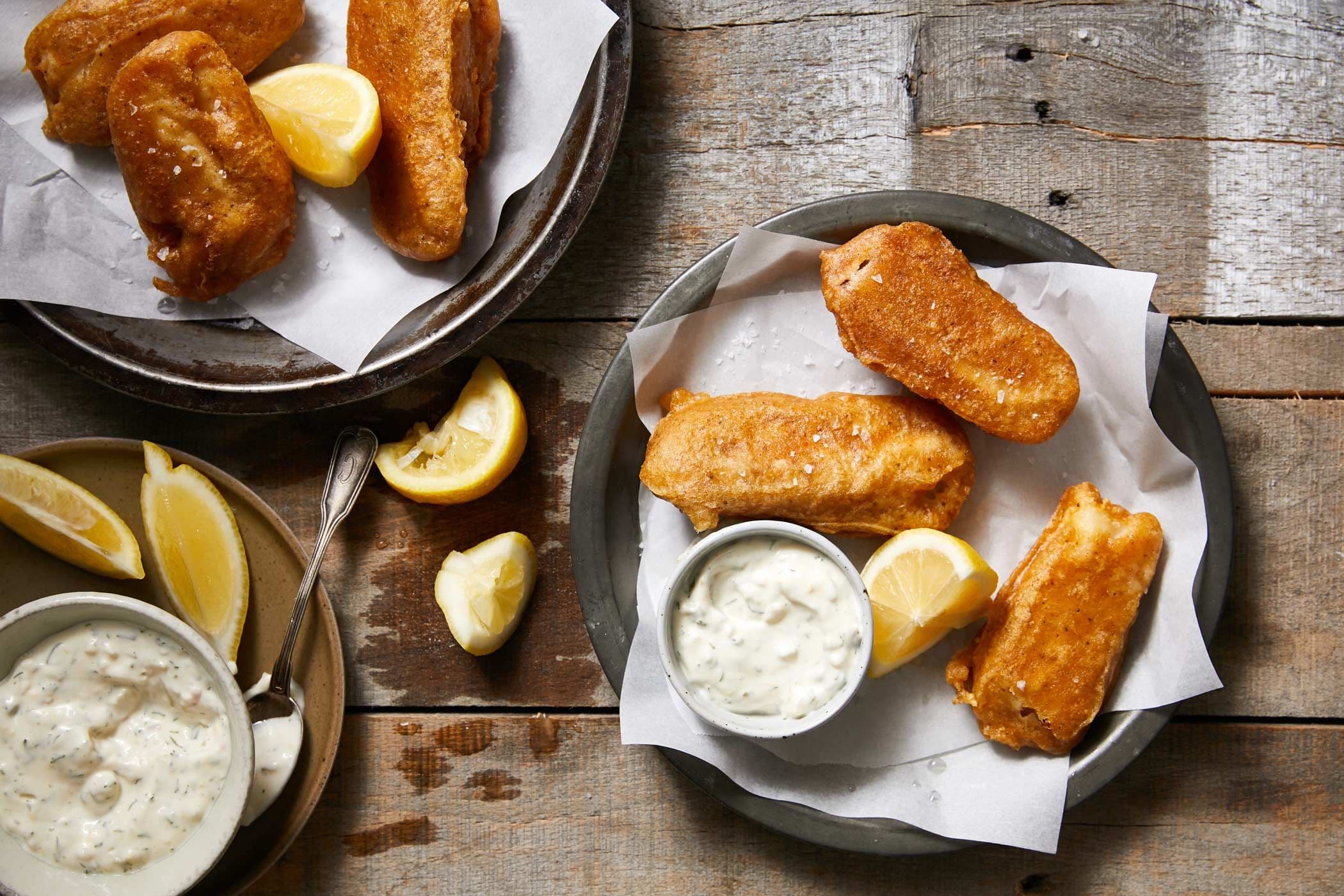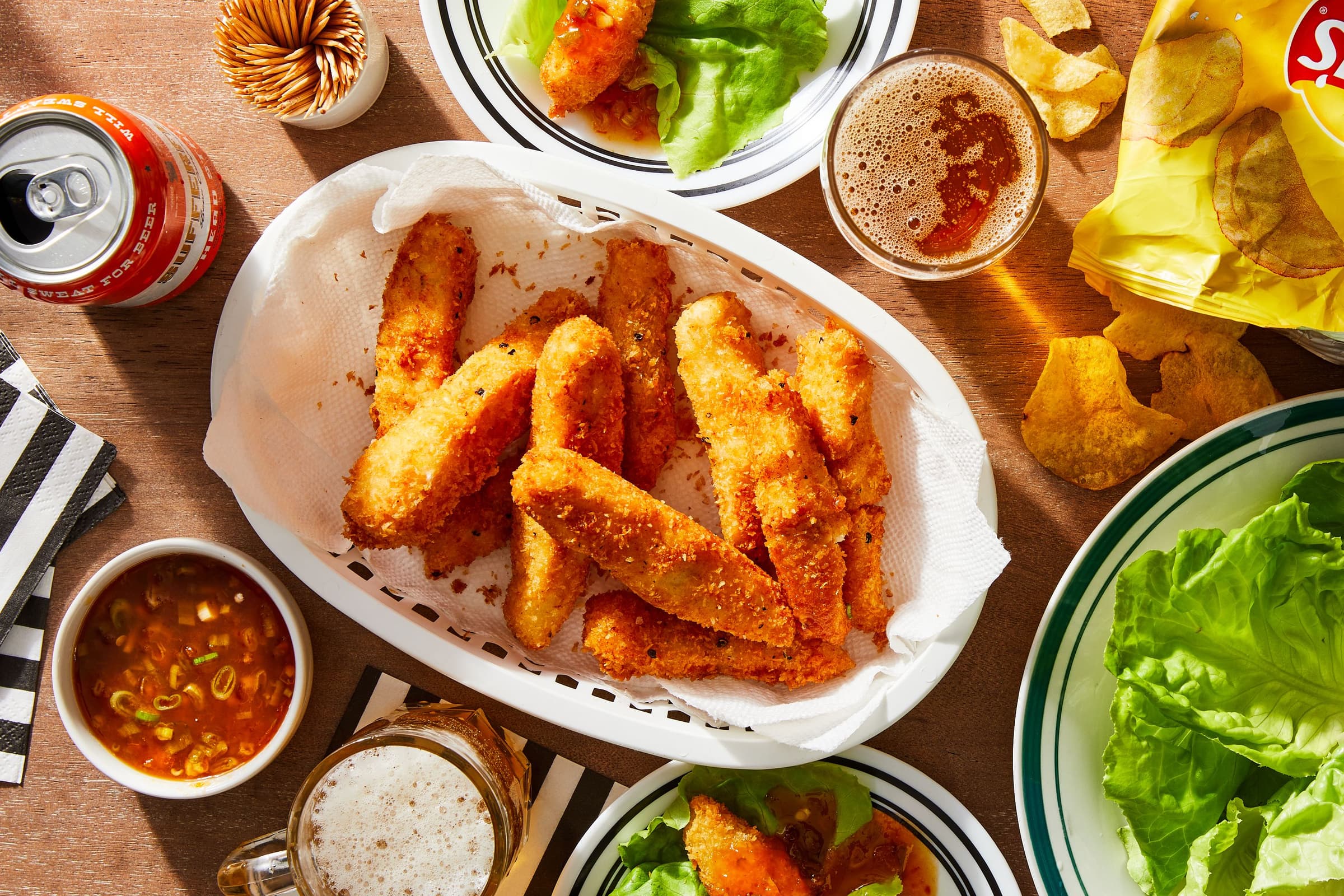What you’ll need
Tall, heavy pot, such as enameled cast iron or stainless steel, or wok, for deep-frying
Large shallow skillet (also called frying pan) or sauté pan (a deep frying pan with upright sides), for shallow-frying
Deep-fry thermometer or instant-read thermometer
Wire rack–lined baking sheet
Slotted spoon, slotted skimmer, or wire spider
Directions
Whether you deep-fry or shallow-fry, having all of your ingredients and equipment ready before you start cooking will make frying easier, neater, and more enjoyable. Arrange the ingredients and equipment like an assembly line, in order of usage: fish, breading or batter, heated oil with thermometer, slotted spoon, wire rack–lined baking sheet, flaky sea salt. Preheat the oven to 275°F if frying in large batches to keep the fish warm.
For deep-frying: Oils with a high smoke point (the temperature at which oils begin to smoke) such as canola, soybean, avocado, peanut, sunflower, and safflower oils are best suited for deep-frying.
1. Add enough oil—about 2 inches—to a deep sturdy pot, so the fish is fully submerged; do not fill the pot more than halfway full of oil to avoid overflow of hot oil when adding fish. Heat the oil to 375ºF to 400°F, depending on the recipe and size of the fish. For uniform cooking, small pieces like fish fingers or nuggets can fry at a higher temperature, but whole fillets or larger chunks should fry at a slightly lower temperature so the fish and coating are evenly cooked.
2. Pat the fish dry with paper towels, then coat in a breading mixture of your choice (this can be done as the oil is heating up; set the breaded fish on a wax paper–lined plate) or dip the fish in batter just before adding to the hot oil. Be sure to let excess batter drip back into the bowl. Carefully add to the hot oil, without crowding, and cook, turning once or twice, until golden brown, 4 to 8 minutes depending on size and thickness of the fish and heat of the oil.
3. Remove with a slotted spoon or spider and transfer to a paper towel–lined rack. Sprinkle the fish with salt and serve right away, or keep warm in a 275°F oven while you fry the remaining fish.
For shallow-frying: In this method, a smaller amount of oil is used to cook the fish, which is only submerged halfway, unlike in deep frying, where the food is fully submerged. Generally, shallow frying is best suited for thinner pieces of fish. The amount of oil doesn’t allow for accurate thermometer reading, unless you have an infrared thermometer which can measure heat at the surface.
1. Before heating the oil, pat the fish dry with paper towels, then coat in a breading mixture of your choice. Set the breaded fish on a wax paper–lined plate.
2. Add about ½ inch of oil to a skillet or deep frying pan (sauté pan) and heat over medium-high heat until the oil begins to shimmer. Drop a pinch of breadcrumbs into the oil; if they sizzle vigorously, the oil is ready for cooking.
3. Carefully add the fish, in batches if necessary, and cook, turning once, until golden brown, 4 to 7 minutes depending on the thickness of the fillet.
4. Remove with a slotted spoon or spider and transfer to a paper towel–lined rack. Sprinkle the fish with salt and serve right away, or keep warm in a 275°F oven while you fry the remaining fish.
Air fryer option: Air-frying is a great alternative to deep-fat frying, but the swap isn’t universal. Batter-dipped fish poses an obvious challenge, but breaded fish works surprisingly well. Any deep-fried or shallow-fried fish recipe can be converted to the air fryer given the correct temperature and timing. It works best with fattier fish like king salmon or sablefish (black cod) so it stays moist as the breading becomes crisp. To achieve the crispy exterior without overcooking the fish, a good spray of vegetable oil is necessary.
1. Preheat the air fryer to 400°F and lightly spray the fryer basket. Place breaded fish into the basket and spray with vegetable oil spray. Transfer the basket to the air fryer and cook until golden and crispy, about 16 minutes.









